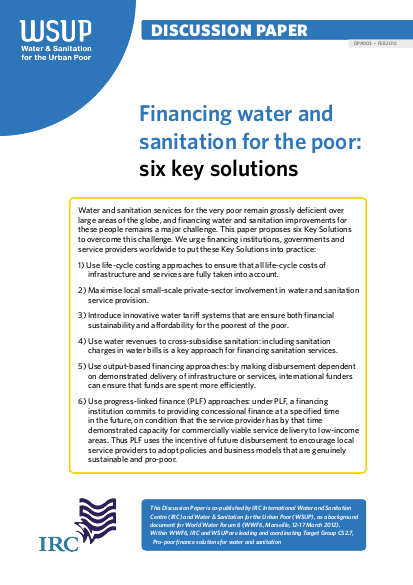
Water and sanitation services for the very poor remain grossly deficient over large areas of the globe, and financing water and sanitation improvements for these people remains a major challenge. This paper proposes six Key Solutions to overcome this challenge. We urge financing institutions, governments and service providers worldwide to put these Key Solutions into practice: 1) Use life-cycle costing approaches to ensure that all life-cycle costs of infrastructure and services are fully taken into account. 2) Maximise local small-scale private-sector involvement in water and sanitation service provision. 3) Introduce innovative water tariff systems that are ensure both financial sustainability and affordability for the poorest of the poor. 4) Use water revenues to cross-subsidise sanitation: including sanitation charges in water bills is a key approach for financing sanitation services. 5) Use output-based financing approaches: by making disbursement dependent on demonstrated delivery of infrastructure or services, international funders can ensure that funds are spent more efficiently. 6) Use progress-linked finance (PLF) approaches: under PLF, a financing institution commits to providing concessional finance at a specified time in the future, on condition that the service provider has by that time demonstrated capacity for commercially viable service delivery to low-income areas. Thus PLF uses the incentive of future disbursement to encourage local service providers to adopt policies and business models that are genuinely sustainable and pro-poor.
Resource collections
- Climate emergency
- Coordination
- UN Habitat - Urban Response Collection
- Urban Response - Urban Crisis Preparedness and Risk Reduction
- Urban Response Collection - Community Engagement and Social Cohesion
- Urban Response Collection - Economic Recovery
- Urban Response Collection - Environment and Climate Change
- Urban Response Collection - Housing, Land and Property
- Urban Response Collection - Urban Crisis Response, Recovery and Reconstruction
- Urban Response Collection - Urban Resilience